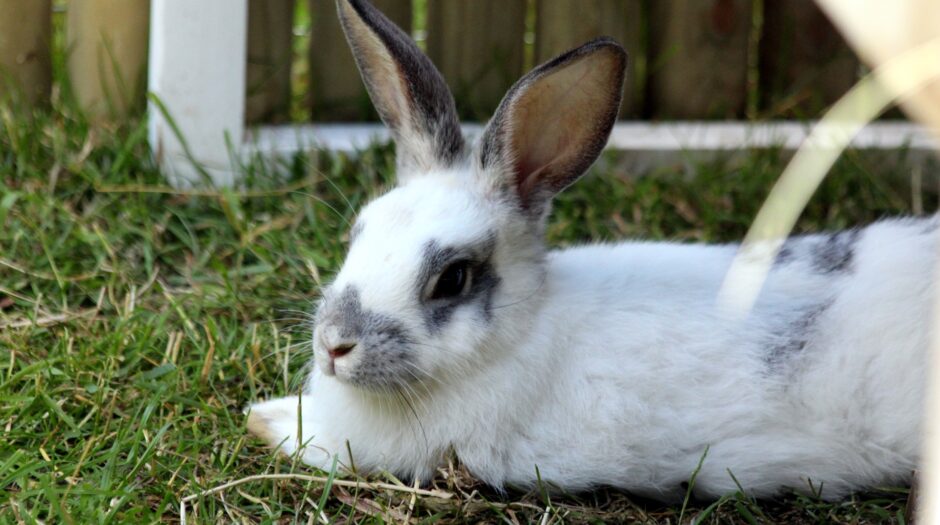Hamsters Vs Guinea Pigs: What’s the Difference Between Them?
Guinea pigs and hamsters are often confused with each other, but in reality they are two completely different animals. In this article we will go over the main physical and behavioural differences between these two animals to hopefully help you understand them better.

Physical Appearance
Guinea pigs and hamsters have differentiating physical features and a different overall appearance. Firstly, guinea pigs do not have a tail whereas, although it’s tiny, hamsters do in fact have one. Another big difference is the presence/lack of cheek pouches!
Hamsters have cheek pouches that can go down to about their hips. They can fill them up with food and transport them to where ever they want to. Hamsters are hoarders and use these pouches to bring their food to their burrows to save for later. Guinea pigs do not have these cheek pouches and are not considered hoarders.
Size & Weight
Adding on to physical appearance, one of the most obvious differences between these two animals is size. Guinea pigs grow to be about 8-12 inches (20-30.5 cm) long and usually weigh anywhere between 800-1,000 grams. In contrast hamsters, depending on the species, will be somewhere between 2-7 inches (5-17 cm) long and will weigh anywhere between 20-200g.
Breeds Vs Species
Guinea pigs have different breeds within their species. Some of these breeds include; American, Abyssinian, Texel, Rex and Peruvian, but the list doesn’t stop there! All of the different breeds are capable of breeding with one another.
Hamsters on the other hand, actually don’t have multiple breeds but rather all of them are considered different species. There are currently 5 domesticated species of hamster; Syrian, Roborovski, Chinese, Winter White, and Campbells Dwarfs. These species, with the exception of Winter Whites and Campbell Dwarfs, are not capable of breeding with each other due to them being seperate species.
Origen
Hamsters and guinea pigs actually originated from completely different places in the world. Guinea pigs are native to South America, particularly the Andes. Hamsters originated from parts of Europe and Asia. This means that their origins are pretty much on the opposite side of the world from each other.

Life Span
Guinea pigs and hamsters also have different life spans. In captivity, hamsters tend to live for 1-3 years, whereas guinea pigs typically live for 5-8 years. For both species it is sometimes longer and sometimes shorter. In the wild, their life span is even shorter compared to in captivity mainly due to natural predators.
Shedding
Anybody that owns guinea pigs knows that these little critters shed a noticeable amount. With a guinea pig, you will have more fur covered clothes, especially during shedding season. With hamsters, although they do shed, it isn’t very noticeable due to the small length of their fur and because they don’t shed as much.
Sociability
Guinea pigs are very social animals and MUST be housed in pairs or groups. Lone guinea pigs will often get depressed or so sad to the point that they don’t want to eat or do anything. They actually receive a ton of enrichment just from living with one another.
Hamsters are actually the complete opposite. They are solitary and territorial animals. If housed together, they can fight to the death or if stopped in time, cause very serious injuries. Hamsters do not get enrichment from one another and should never be kept in the same cage as each other.

Activity Level
These two animals also have different activity levels and times of day where they are most active. Hamsters are most active during the night. Most people consider them to be nocturnal, however, hamsters are actually something called crepuscular. This means that they are most active at twilight (dawn & dusk). Hamsters will sleep during the day, become the most active during twilight hours, and then calm down more during the night. Guinea pigs are primarily diurnal, which means that guinea pigs tend to be awake during the day.
Hamsters and guinea pigs also have different energy levels. Hamsters are more active and have a natural instinct to move, meaning they require a wheel and other enrichment to get their energy out. Guinea pigs do not require a wheel and although they also require enrichment, they tend to be less active than hamsters.
Flexibility
Hamsters are known escape artists. They can fit through small openings such as a crack underneath a door or a chewed through opening in their cage. As well as that, they have the ability to completely turn themselves around in a tube and climb up almost anything with enough grip (which is why they require a lid on their cage). Guinea pigs on the other hand, have very delicate spines and are incapable of manoeuvring the same way as hamsters. They can’t jump very high and just don’t have that same flexibility that hamsters possess.
Noise Level (Vocally)
Hamsters are quiet animals in comparison to guinea pigs vocally. The only noises you may hear is from hamsters, would be them doing something in their enclosure such as running on their wheel or chewing on wood. In comparison, guinea pigs are very vocal animals because that is how they communicate. If they hear noises like a bag crinkle or the sound of the fridge opening they are sure to let out several excited wheeks.
Here’s a great video explaining some of the noises you may hear from a guinea pig by Little Adventures on Youtube:
Diet
Guinea pigs are herbivores. Their diet consists of pellets, vegetables, and a lot of hay. Hamsters do eat some of the same things as guinea pigs but they are considered omnivores. A hamster’s diet consists of things like insects, seeds, pellets, grains, nuts, fruits, and vegetables. If hamsters were fed a sole diet of hay, they would be very malnourished and would eventually starve to death.

This list is just a few of their differences but we hope this helped you get a gist of these two animals. This article only went over the differences they have as animals, like their physical appearance, diet, and noise level but if you’d like to learn about their differences as pets we recommend you check out this article by guineadad.com; Should I Get A Hamster or Guinea Pig?
Also, if you are looking for a pet and have decided that neither one is suitable for you, consider reading our article: Which Pet is Best for You? Answer These Questions Before You Buy














